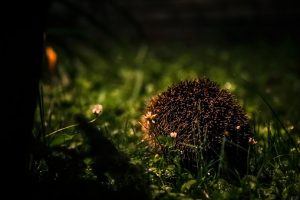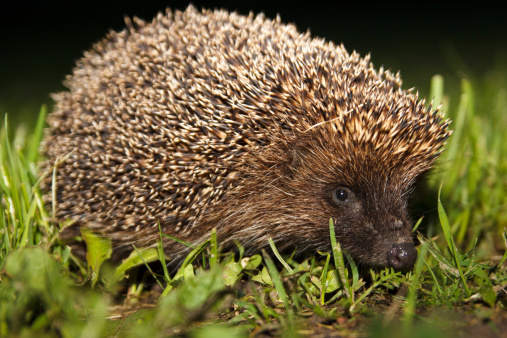Hedgehogs have never been the easiest creatures to capture on film. Like many of the other woodland wildlife, such as foxes and badgers, that sometimes wander into our gardens in search of food, hedgehogs are most active at night when people are generally not around.
With the number of hedgehogs in the UK dropping to a worrying low, it is becoming increasingly more difficult to catch a glimpse of these wonderful creatures. In fact, it is said that there are fewer than a million hedgehogs left in Britain. That’s a huge decline in the last 70 years, largely due to loss of habitat caused by human development.
However, it is still possible to film hedgehogs if you use the right approach, equipment, and most of all; have the patience to wait for them.
So, in this article we will provide tips on how to film hedgehogs at night and hopefully allow you to lay eyes on your nighttime visitors.
How to film hedgehogs: the easiest way
One of the easiest, and most guaranteed, ways of filming hedgehogs is to go visit your local hedgehog rescue centre. These hedgehogs have been saved from an almost certain death and are looked after by the people running the rescues.
The hedgehogs at these rescues are often tame and used to humans, and so it is easier to get good quality photos of them, even in daylight.
You can support your local rescue by making a donation of money to help with the running of the centre, or by simply taking a few cans of dog food with you as a treat for the hedgehogs.
How to film hedgehogs at night with a SLR
If you’re going to try and capture the hedgehogs in your garden with an SLR camera, you need to pick out your spot for setting up first. Try to work out where the hedgehogs are gaining entry to your garden and then set up your camera as far away from there as possible while still getting a good clear shot of the animals. Using a 200mm lens or higher is recommended as it will allow you to get the details you want without being too close and scaring the hedgehog.

You’re going to be sitting or lying down in the spot for a fair old while, night after night in many cases, so make sure it’s comfortable. Set your camera up so that you are shooting down low, and use a tripod or something else to prop the camera up. Set your camera to silent shutter mode, or the click might startle the animal and cause it to curl up in a ball.
Other tricks to try is setting your camera to a high ISO sensitivity, and a low F-stop. These can increase your shutter speeds and also help to blur the background while making the foreground, i.e. the hedgehog stand out in the picture.
How to film a hedgehog at night with a wildlife camera
Infrared (IR) wildlife cameras are much cheaper and readily available than they used to be, and offer you a relatively simple way to capture not just hedgehogs, but all sorts of wildlife on film during the day and at night.
We have tested and reviewed the top rated wildlife cameras, and you can check out our findings, along with links to the product pages on our ‘Best Wildlife Cameras Reviewed’ page. Wildlife cameras are very easy to set up and run, but you have to be aware of a few things to get the most out of them.

First of all, I would recommend paying a bit more and getting one of the best models available. You want the highest resolution images you can get, and the best sensors. Also, the ability to be able to dial in the settings for sensitivity and more is very important in order to get the best film footage.
When setting up your wildlife camera to film hedgehogs, you should do so at a low angle to get the best footage. Setting up some food bait, such as a little dog food in front of the camera and its sensors can be a good way to get some great images.
The problem with wildlife cameras is that the sensors can’t distinguish between an animal, or any other type of movement. Therefore, you need to be careful that some tree branches, foliage, or other garden items that could get blown by the wind aren’t in line with the sensors, as they will trigger the camera.
The good thing about these wildlife cameras is that you don’t have to be present to activate them and this reduces the chance that the hedgehogs will be disturbed by you, and makes it more likely that you’ll catch them acting naturally.
If you’re going to use a wildlife camera, always check the memory card each day and delete any useless footage as well as downloading any good stuff to your computer before replacing it in the camera.
In addition to this, you need to check and change batteries. You don’t want the camera to stop working in the middle of the night and potentially miss out on any nocturnal hedgehog activity.
Don’t expect to get amazing images after just one night of filming either. These things take time, so you need to be patient. With persistence, you should get the footage you are after, and you might even capture foxes, mice, and badgers in the act too.

To help attract hedgehogs to your garden you can leave some food as bait, but another excellent way is to set up a log pile. This will attract various insects, and along with it; hedgehogs looking for food. You could make them a feeding box too.
To really get the best chance of filming hedgehogs at night, you should set up multiple cameras, but this might get a little expensive, so you’ll need to work out if the cost is really worth it. For me, it certainly is and next you might be interested in a bird box camera.
